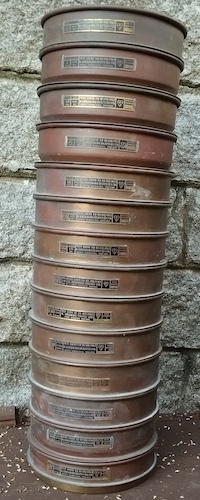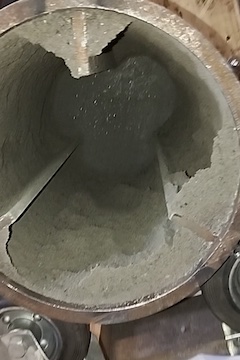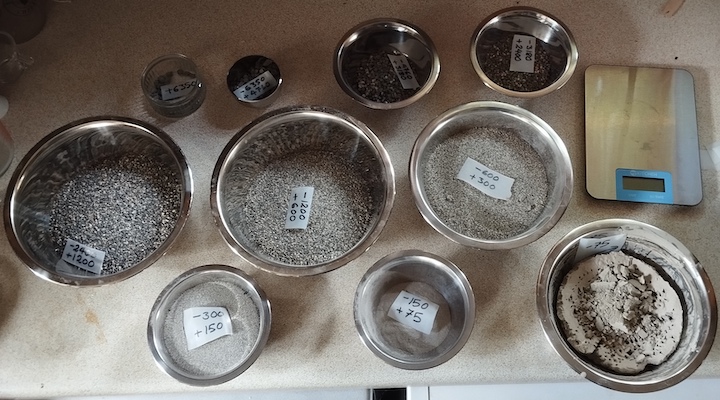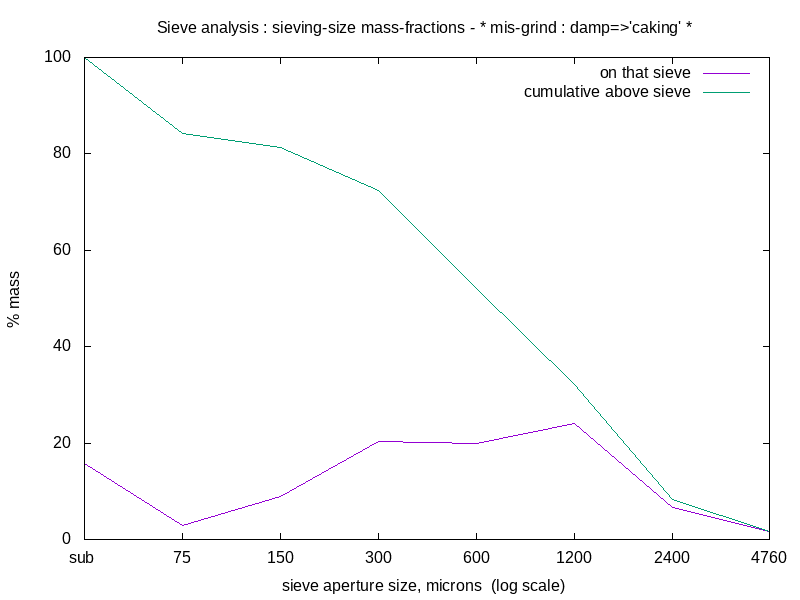
With this stack of sieves

I did a sieve analysis as the Particle Size Analysis on an early test grind done in my rod-mill [video on my YouTube channel].
The rod-mill batch charge of 10mm granite chippings are what would be used to surface a pathway. This serves as a useful "test" and "reference" feed to investigate the mill performance.
The reason for wanting to get a Particle Size Analysis on this grind
is that it was so wrong.
Seeking to suppress dust-formation (that was achieved!), I fed the
granite chippings to the mill wet, giving a damp ground product.
The comminute, damp, "caked" around the periphery of the rod-mill shell,
giving a "nonsense" inhomogenous grind.

Hence - interesting case to do a particle size analysis on.
Likely to throw challenges broadening the learning of sieve analysis.
I wet-sieved to eliminate dust-formation.
The separation into sieve sizes is seen here:

The sub-sieve very-fines (lower right-hand-side) have cemented together as a clay would in drying.
The sieve-sizes used were, in microns (micro-metres):
6350 4760 3180 2400 1200 600 300 150 75
The masses on each sieve were:
Aperture mass(gr) 6350 21 4760 42 3180 116 2400 141 1200 932 600 774 300 787 150 346 75 111 -75 615
By arithmetic (addition) - the sum total of these masses is 3885 g (3.885 kg)
Amount on each sieve - and finally the "sub-sieve" beneath the smallest aperture sieve - expressed as a percentage of the total mass...

A data "nonsense" I rectified in the presentation : the sieve series
is predominantly a geometric progression of halving size.
However, 6350microns and 3180microns are misfits in that series.
This
This was rectified by adding the "6350microns" mass to the 4760microns mass, and likewise the "3180microns" mass to the 2400microns mass - and not plotting the 6350micron and 3180micron points.
Hence the data plotted - aperture-size (microns) and mass (kg) - was
4760 0.063 2400 0.257 1200 0.932 600 0.774 300 0.787 150 0.346 75 0.111 37.5 0.615These sum to the same 3.885 kg, obviously.
Quantitative classification as presented in the graph of the sieve analysis supports the immediate impression that particle sizes "are all over the place".
Pleasing result in many ways for a first effort at sieve analysis.
(R. Smith, 09Jul2025, 10Jul2025 (cake; obsns))